Parathyroid Anatomy & Development
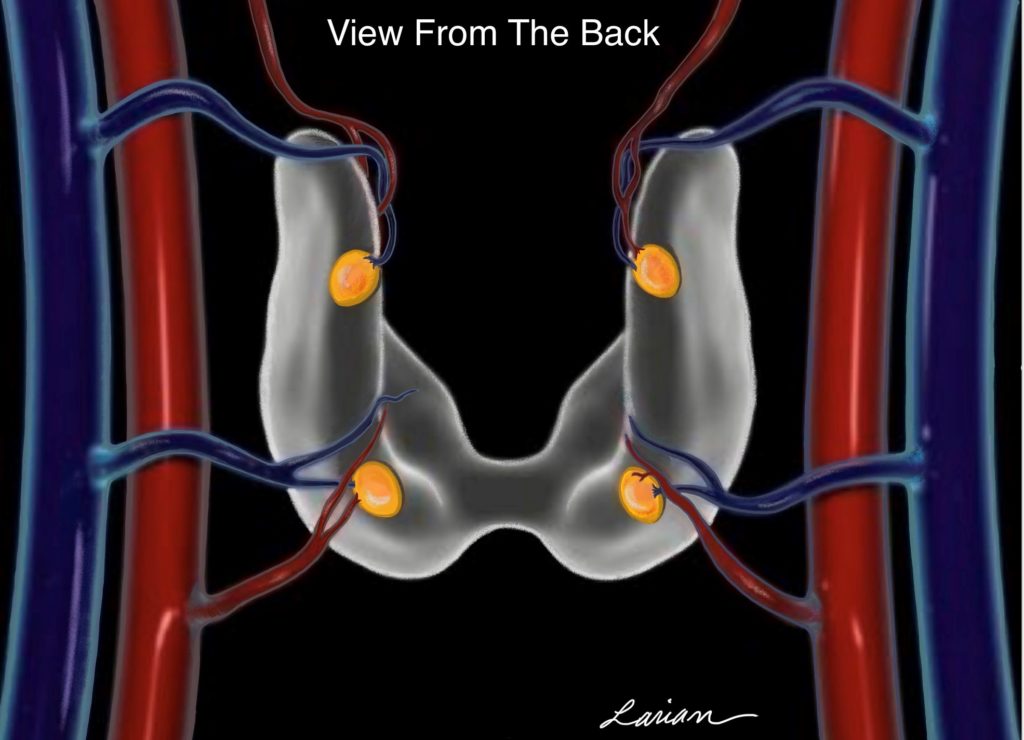
The vast majority of people have four parathyroid glands, and each gland is normally the size of a grain of rice. However, each of the parathyroid glands can be as large as a pea and still be normal. The parathyroid glands weigh roughly 50 mg and have a yellow-tan color. The glands are generally adjacent to the thyroid gland and lie flat against it. They also have the same blood vessels as the thyroid gland, due in part to the fact that the parathyroid and thyroid glands are close to each other and develop at the same stage in the fetus.
An In-Depth Look at the Neck Anatomy
Click on the interactive image below to better understand the neck anatomy in detail.
During the sixth week of fetal development, the parathyroid glands develop as two pouches on each side of the throat and travel down to rest behind the thyroid that is also traveling down toward the lower neck. (Figure 1) Because of this migration and the fact that all of the other organs are developing at the same time, the parathyroid glands sometimes do not end up behind the thyroid. In fact, the parathyroid glands may remain high in the neck or end up in the chest.
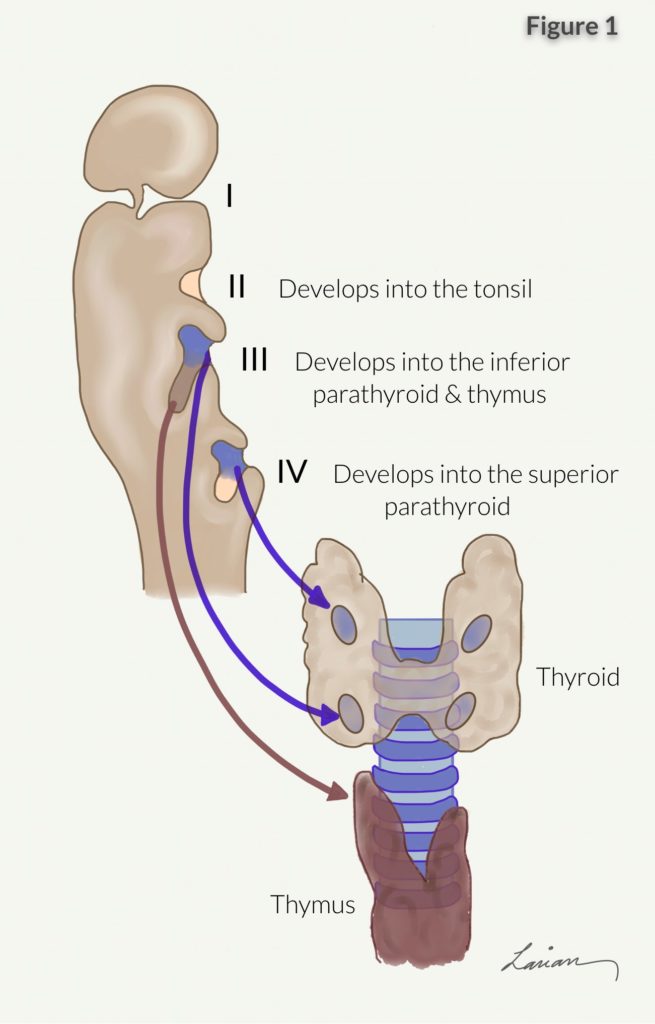
The superior parathyroids have a more consistent location because they have to travel less. The inferior parathyroids travel a longer distance, so they can end up in an unusual position more often. The inferior parathyroid glands also develop in the same pouch as the thymus gland which travels along with the parathyroids and ends up finally in the upper middle chest. (Figure 2)
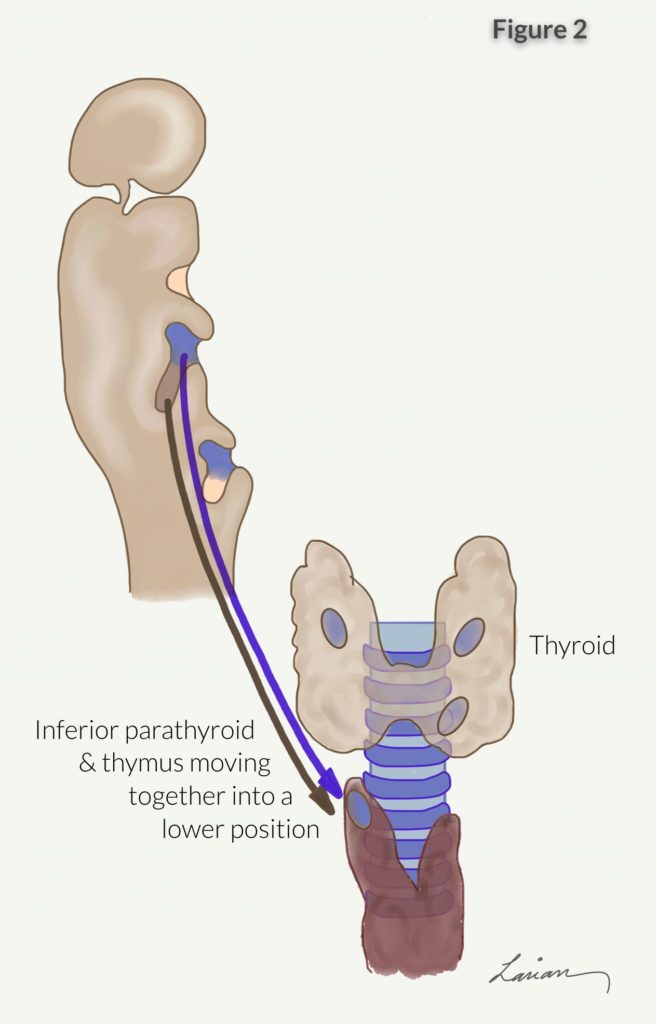
So often times when a parathyroid gland cannot be found it maybe inside the thymus or even lower in the chest. (Figure 3)
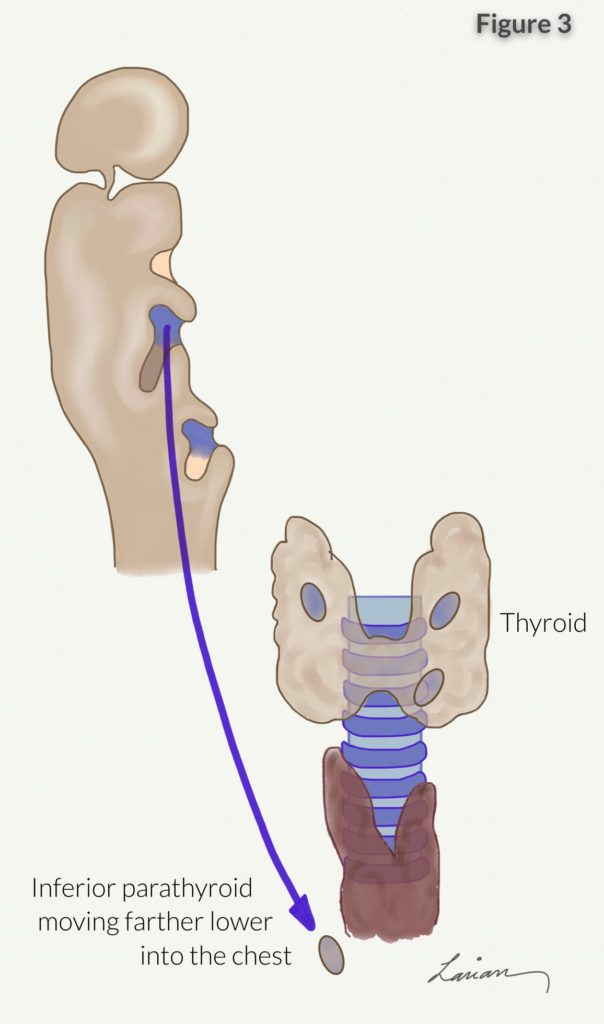
Adding another twist to the parathyroid travel itinerary is that sometimes the two parathyroid glands traveling on the same side may fuse, and the person may end up having only 3 parathyroid glands. (Figure 4)
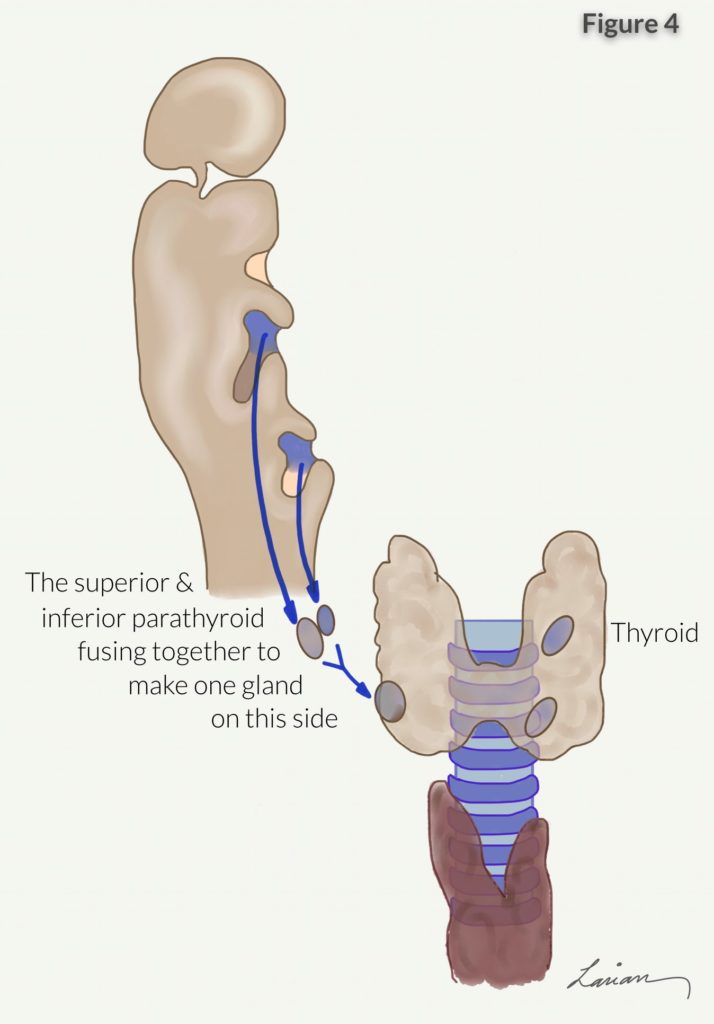
At other times, as the parathyroid gland travels down, it may leave pieces of itself along the way, so the person may end up have 5 or more parathyroid glands. (Figure 5)
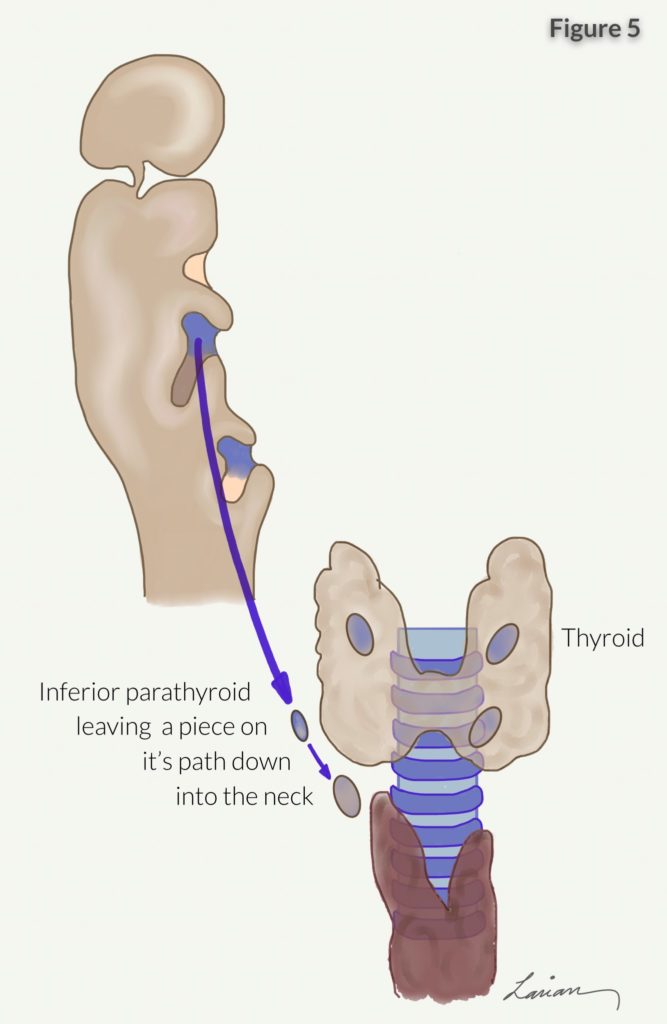
Expert parathyroid surgeons keep these possibilities in mind when treating hyperparathyroid patients. This is also why intraoperative PTH testing is so important, because if your surgeon finds 4 glands and remove one that may seem slightly larger, and doesn’t check the rapid intra- operative PTH then they will not know if a 5th large abnormal gland is there that has not been found yet.
Recurrent Laryngeal Nerve Anatomy
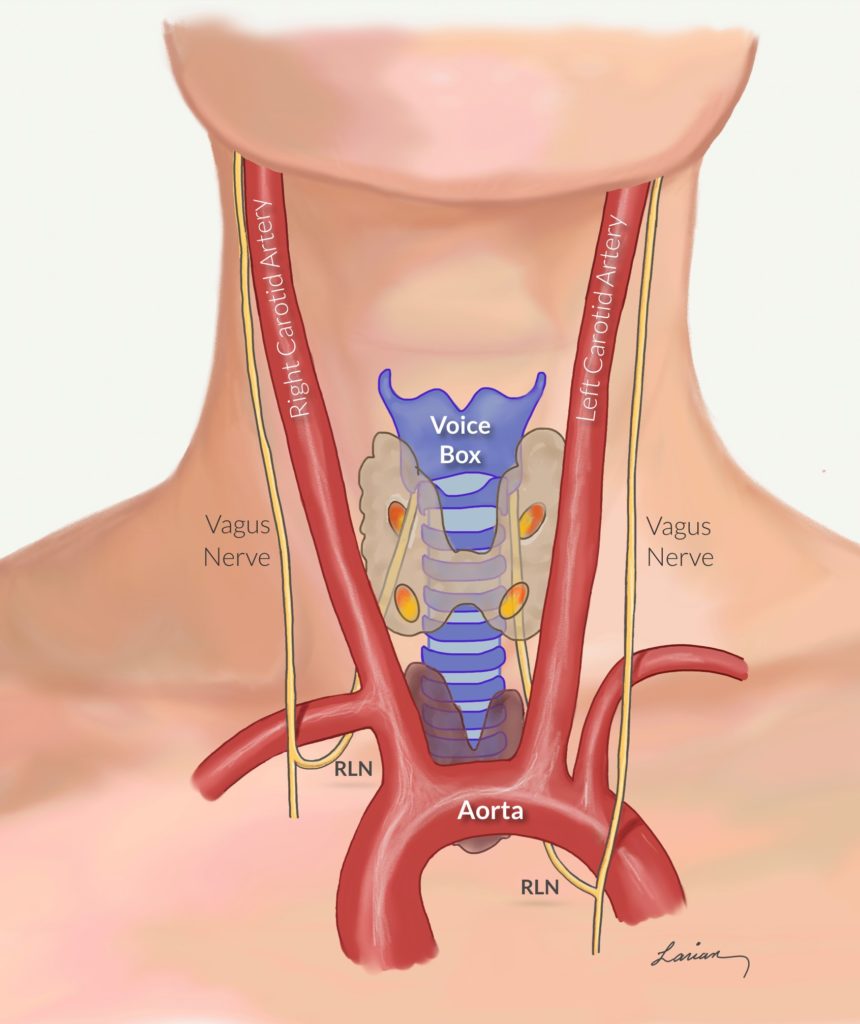
The nerve in charge of controlling the vocal cords is called the recurrent laryngeal nerve (RLN). There is one RLN on each side of the neck. They are each a branch of the Vagus Nerve that leaves the brain and goes all the way down into the abdomen giving off branches on it’s way down. The RLN generally travels under (or deep to) the inferior parathyroids and over (or superficial to) the superior parathyroids. This is, in fact, the most certain way to know if the parathyroid you are removing is a superior one or inferior one, because the two parathyroids can be very close to each, or not in their usual location; their location with respect to the RLN can help the surgeon know which gland they are dealing with.
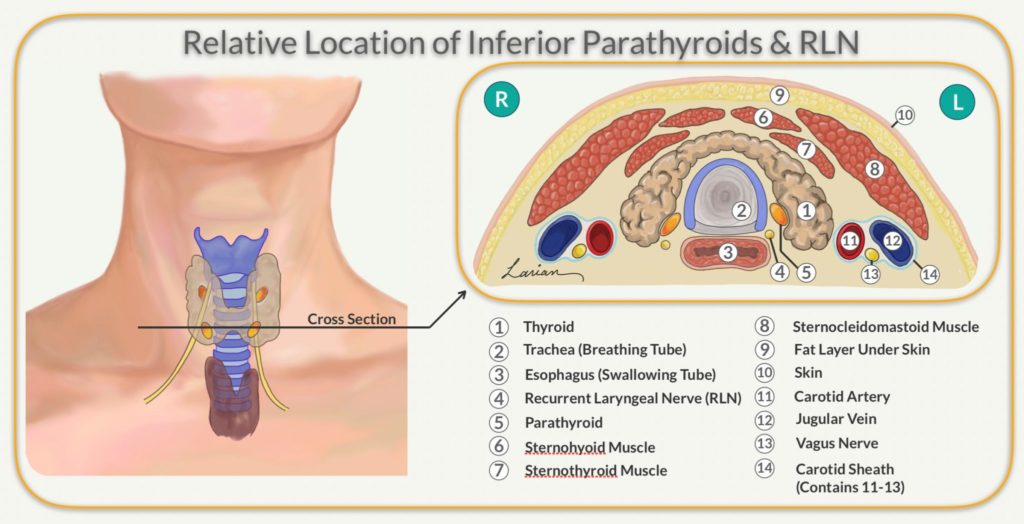
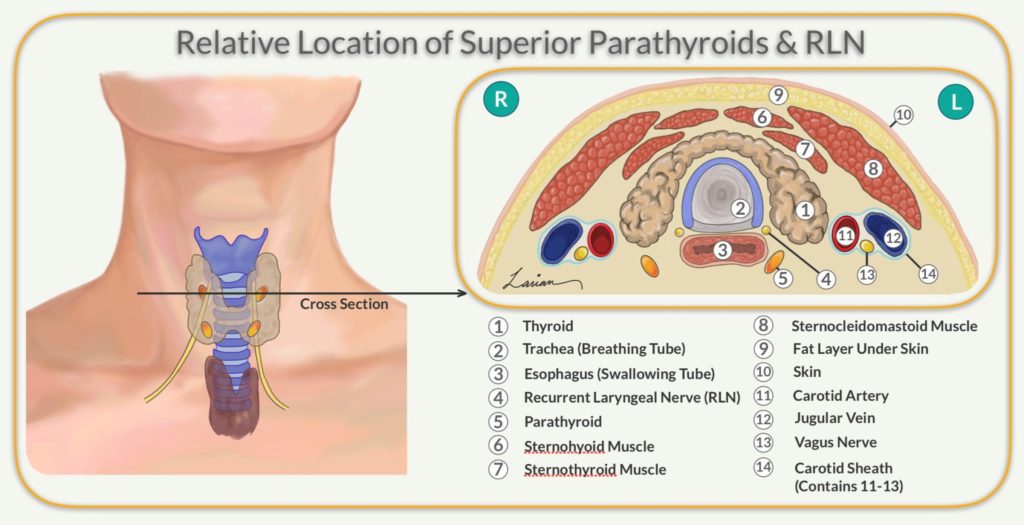
The RLN can usually be easily identified in a person that has NOT had previous neck surgery, because it usually has a consistent location as it comes up from below the thyroid as it moves up towards the voice box. However, in a person who has had previous surgery around the thyroid gland (such as thyroidectomy, parathyroidectomy, or spine surgery from the front of the neck) then scarring around the RLN can make it difficult to identify & protect the nerve. The greater the surgeon’s experience and expertise, the more likely they are to be able to safely find and protect the RLN in scar from previous surgery.
Parathyroid Disease
If there is a disturbance in just a single cell on one of the parathyroid glands and the calcium levels are no longer being monitored properly, you will develop hyperparathyroidism. Watch the video below to learn about hyperparathyroid disease.
Parathyroid Anatomy FAQ
Q: If a person has 3 parathyroid glands, or 5, is the functioning of the parathyroid system any different? In other words, can the blood tests tell you if someone has 3 or 5 parathyroids?
A: No, unfortunately the blood tests do not and cannot distinguish between these situations.
Q: Does the location of the parathyroid gland effect how it functions?
A: No. As long as there is blood vessels feeding the parathyroid and connected to it, the parathyroid can function properly.
Q: If a person has only 3 parathyroids and one of them is abnormal (parathyroid adenoma) and removed, will having only 2 parathyroids be adequate to maintain calcium balance?
A: Yes, we only need one gland to function properly to be able to maintain calcium balance.
Q: How does the surgeon know where the abnormal parathyroid is, if the scans don’t show it?
A: Experts surgeons that are familiar with parathyroid growth and migration path, know the likely areas where the misplaced parathyroids may be, and focus their attention during surgery to those areas.
Q:If a person has more than 4 parathyroids and hyperparathyroidism caused by parathyroid hyperplasia with all the glands being abnormal, how would the surgery be done?
A: If during surgery four glands are found, 3 glands are removed as well as a portion of the fourth, but PTH levels don’t come down then that shows there to be more abnormally functioning parathyroid. Then the search continues to find the more parathyroids, again this requires expertise.
Schedule a Parathyroid Disease Treatment Consultation Today
To learn more about parathyroid disease treatment options, please contact the CENTER for Advanced Parathyroid Surgery today or call at 310-461-0300 to schedule a consultation with board-certified head and neck surgeon Dr. Babak Larian.









